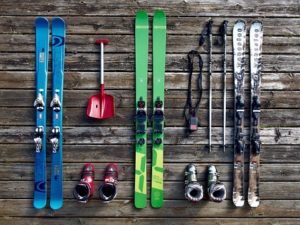 As the Autumn begins, now is the time to start preparing for hitting the slopes. Many people make the error of not preparing physically for their ski/snowboarding holidays; this often leads to injury and frustration.
As the Autumn begins, now is the time to start preparing for hitting the slopes. Many people make the error of not preparing physically for their ski/snowboarding holidays; this often leads to injury and frustration.
Skis
- Get equipment regularly checked and serviced
- Bindings are set for your safety according to your weight and ability and should only be altered by a specialist
- They should release easily in a fall
Boots
- Ski boots should have a comfortable fit.
- The forward lean and flexibility of boots are dependent on your level of skill – not on ‘poser’ value or being so rigid as to prevent comfortable movement.
- Those with pronated (flat) feet may need to alter the cant of the boot either inside outside with wedges or inside with orthotics. This can be assessed by a specialised fitter podiatrist or a physiotherapist before your holiday.
- Problems with rubbing e.g. at the front of the boot may not be the fault of the boot but your posture inside. Try to make sure you stand with your weight equally over the whole length of you foot while skiing.
Training
- GET FIT FOR SKIING – DON’T USE SKIING TO GET FIT!
- Skiing is not a static sport, but more a series of “linked recoveries”.
- It needs a high level of general fitness to get the most out of your skiing, as well as practised skills. Training also helps to prevent injuries by enabling the body to react to the forces thrown at it by bumps and speed or by positioning the foot inside with orthotics.
- Many skiers will already know the static thigh muscle exercise in a seated position against the wall. This will help with the stability of the knee joint BUT it is not enough to get fit for skiing!
- We also need to do all round aerobic training and muscle strengthening including dynamic legwork such as step-ups, cycling, jumps and hops. Swimming and running can also help. General fitness classes include a lot of these but some classes are designed especially for skiing, so look out for these.
- Balance training is also very useful to help with the position of the body over the skis. Swiss ball work, tai chi, yoga and Pilates all help to train your balance.
Before you Ski……..WARM UP
WHY?
- Muscles work better when they’re warmer
- You will increase the blood and oxygen supply to your muscles
- Joints move better with less strain on ligaments and muscles
- Nerve impulses speed up making you faster
HOW TO WARM UP
- Take 15 – 20 minutes before you put your skis on – gentle jogging on spot, followed with stretches of trunk, arms and especially legs, quads (thigh muscles) hamstrings and calf.
- Take the first ski run of the day gently – and after a long lunch!
IF YOU DO GET INJURED
Severe injuries need immediate medical attention. Less severe injuries can be helped by:
‘P. R. I. C. E.’
- PROTECTION – use strapping or a support for comfort and to protect the area
- REST – don’t try to carry on skiing if there is swelling and pain
- ICE – apply ice packs, best wrapped in a wet flannel or terry towel for 10 20 minutes regularly
- COMPRESSION – use a bandage or Tubigrip® to help to reduce the swelling – but not too tight! Check toes and fingers regularly for colour and temperature and it’s usually better to remove compression at night
- ELEVATION – elevate or raise the injured part above the heart to help to disperse swelling
Follow this advice and have a good time!





